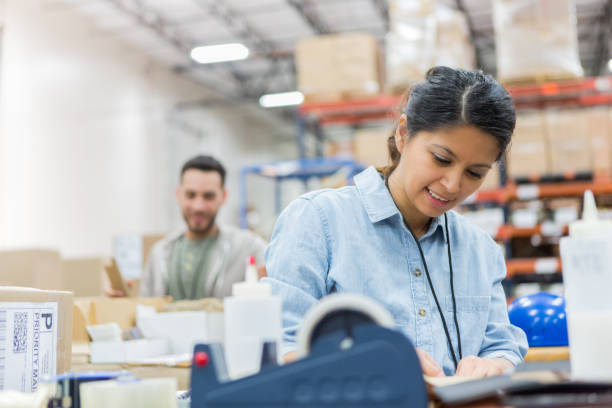The Ultimate Guide to Packaging Equipment, Warehousing, and Plastic Supply in 2025
In today’s fast-paced supply chain and production environments, efficient packaging solutions are essential.
Whether you're running a food processing facility, an e-commerce warehouse, or a plastic manufacturing business, the right packaging equipment, warehousing, and material suppliers can directly impact your bottom line.
This article breaks down the key components of modern packaging workflows—covering everything from food packaging equipment and trusted packaging equipment manufacturers, to finding warehousing storage nearby and sourcing the right plastic manufacturers.
Why Packaging Equipment Still Matters in 2025
Modern packaging is about more than sealing boxes. It’s about efficiency, compliance, and consumer trust. With automation and sustainability becoming industry standards, investing in quality packaging equipment is no longer optional—it's a competitive necessity.
Whether you’re automating for the first time or upgrading legacy systems, the right machinery can reduce labor costs, improve product consistency, and enhance packaging speed.
Types of Packaging Equipment and Their Applications
Depending on your product type and volume, different machines serve different needs:
- Filling machines: Ideal for liquids, powders, or granules.
- Shrink wrap machines: Common in retail, electronics, and logistics.
- Case sealers and box erectors: Great for high-volume warehouse operations.
- Labeling machines: Crucial for compliance and branding.
- Vacuum packaging machines: Often used for food preservation.
Choosing the right equipment involves assessing production scale, product type, and budget. Working with reputable packaging equipment manufacturers can help identify the best solutions for your workflow.
What Makes Food Packaging Equipment Unique?
Food packaging has stricter standards due to health regulations. Food packaging equipment must meet hygiene standards, allow easy cleaning, and often be made from stainless steel or food-safe materials. Other key considerations:
- Modified Atmosphere Packaging (MAP) for perishables
- Temperature control systems for dairy, meat, or frozen goods
- Tamper-evident sealing to ensure consumer safety
When evaluating equipment for food applications, always prioritize regulatory compliance, material safety, and automation support.
How to Choose the Right Packaging Equipment Manufacturer
Not all packaging equipment manufacturers are created equal. Here’s what to look for:
- Industry specialization: Some focus on food, others on cosmetics, pharmaceuticals, or logistics.
- Customizability: Can they tailor machinery to your specific process?
- After-sales support: Availability of training, repairs, and parts matters.
- Certifications: CE, ISO, FDA, or GMP compliance depending on your region.
- Scalability: Choose manufacturers that can grow with your business.
Request product demos or site visits when possible, and read reviews from companies in similar industries.
Warehousing Storage Nearby: What to Consider
If your supply chain involves stockpiling finished goods or raw materials, finding reliable warehousing storage nearby can make logistics smoother and faster.
Key considerations:
- Location: Proximity to your factory or delivery hubs reduces transportation costs.
- Flexibility: Can they handle seasonal demand or short-term surges?
- Technology: Inventory management systems, barcode scanning, and climate control.
- Security: 24/7 surveillance, insurance, and access control.
Look for warehousing providers that offer transparent pricing and scalability. Many small manufacturers now prefer third-party logistics (3PL) services that include both storage and distribution.
Plastic Manufacturers: Sourcing the Right Packaging Material
Plastic manufacturers play a critical role in your packaging strategy, especially if you're using custom molds, containers, or flexible film.
Common plastic materials include:
- PET: Often used in food and beverage packaging
- HDPE: Suitable for detergents, cosmetics, and chemicals
- LDPE: Great for plastic bags and film
- Bioplastics: Eco-friendly alternatives gaining popularity
When choosing a supplier, consider material grade, sustainability policies, and ability to meet custom specs. With the rise of environmental regulations, partnering with eco-conscious plastic manufacturers can improve both brand image and compliance.
Conclusion: Building a Smarter Packaging Ecosystem
From choosing the right packaging equipment to managing warehouse storage nearby and aligning with reliable plastic manufacturers, smart packaging is a full-spectrum strategy. In 2025, automation, sustainability, and flexibility are not just trends—they’re survival strategies.
